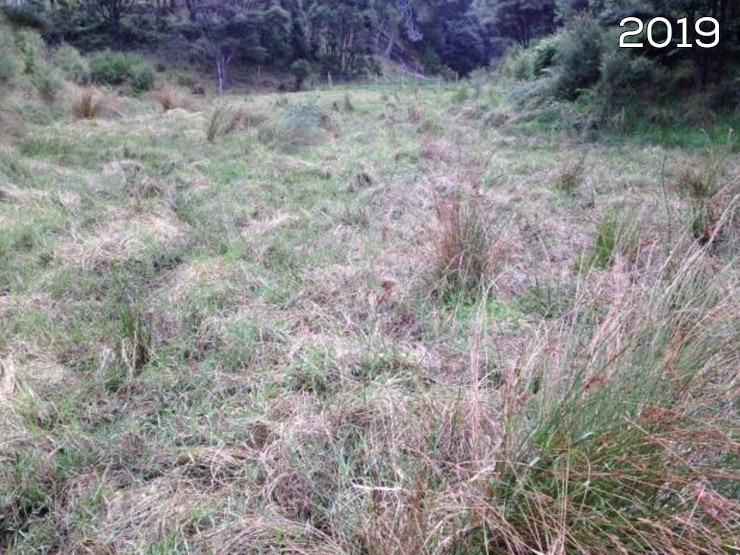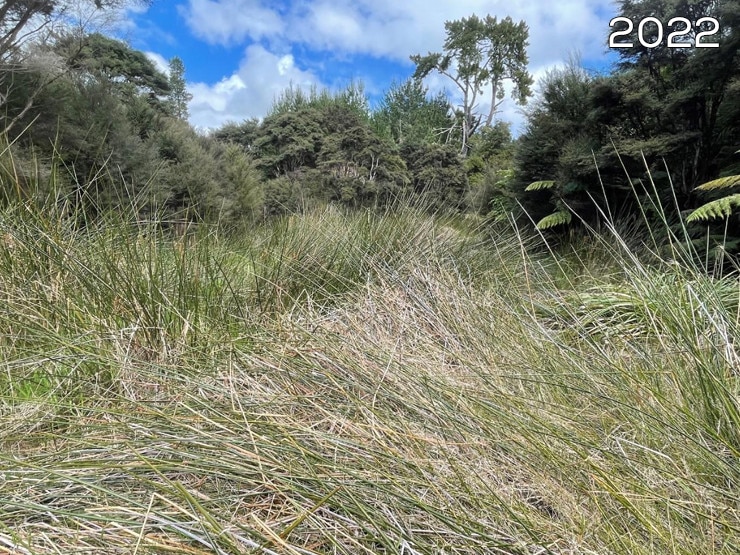By Myles Goodwin – Rural Subdivision Expert | Planning & Environmental Director Cato Bolam
In this article we focus on a specific case study where we restored a wetland that initially had very low vegetation quality dues to decades of ongoing stock grazing, and then proceeded to apply for and gain subdivision resource consent based on these areas, and then a new title.
The property was a site in Makarau Road, in the Rodney ward. This was a 26ha property that had a degraded wetland in a gully in the back of the property, with the wetland being initially measured at approximately 0.65ha. The wetland was one that remained damp over the summer months. It had a farm crossing with a culvert through part of it. The initial vegetation cover was mainly an exotic wetland grass called mercer grass, along with other exotic wetland species and a scattering of native rushes. There were steep slopes down to the wetland with scattered small kanuka and rank pasture. Weeds such as blackberry were common. A photo of the main area is shown below. The only native plant is the taller rush.
The first step was to exclude the cattle that had been constantly pugging the wetland and preventing natural regeneration. A few months later other native species that had been hanging on, but had not been observable, became apparent as they grew. Weed control to remove the blackberry was undertaken, using a selective spray that targeted broadleaf plants. No widespread spraying was undertaken as that can lead to an exotic, but non-weedy plant being replaced by one that is an ecological weed that is then harder to control. The mercer grass was not sprayed, as we were of the view that the tall growing native species would easily outcompete a creeping grass, and this proved correct. We find that very few wetlands require widespread spraying prior to planting.
The area was planted in spring with five main species, 2,000 of one and 1,000 of each of the others. Planting the 5,000 plants was undertaken by the landowner over about four weekends. A sharp spade is needed to cut through fibrous roots of established plants, but the ground is soft. Success was variable, mainly due to pukeko related losses. One of the plants had 1,000 planted, but only one remained after a year. Another had perhaps 100 remaining, whereas the others were not really targeted at all. This was a learning experience. Some replacement planting was undertaken.

Over the following twenty months, the native plants established very well, growing to form a dense cover over almost the entire wetland area. The pukeko issues were resolved by a change in plant selection and no other significant losses were encountered. Maintenance involved some respraying of the blackberry, and replacement of a boundary fence to stop the neighbor’s stock getting in. The area just needed time to grow. The twenty months included two growing seasons, and one winter. The plants get well established in the first season, and then put on a lot of growth in the second, with the 1m spacing of the plants allowing for the spreading plants to start to merge. At this point there is little risk of failure, and the area was ready, from a quality perspective, to present to Council as part of a subdivision application. Consent was granted with there being no issues with the wetland.
The restoration turned an area of what was effectively waste ground, being unproductive pasture creating environmental problems and water quality issues every time it was grazed, into an area of quality wetland. Several years on, dense wetland vegetation over 2m tall blankets most of the area. The following photo, taken from the same place as the one above, shows the restoration.
The stream below now flows all summer due to the water stored, and the farm water supply has become more reliable and of much better quality. Abundant birdlife inhabits the area and the edge zones which were planted with native trees.
Many farms have very similar areas of wet, unproductive pasture that can be tuned into valuable environmental assets, and which allow the creation of new titles. Our team have been advising on wetland restoration for over 22 years and are highly experienced in guiding you through the restoration and subdivision process.
Myles Goodwin and the Cato Bolam team provide start to end subdivision services. Please contact Myles for an obligation free discussion via [email protected]
Or get in touch via the contact button below.


